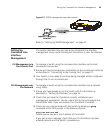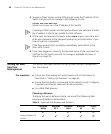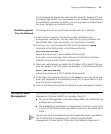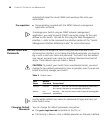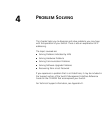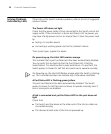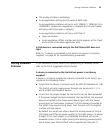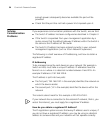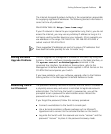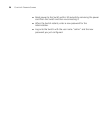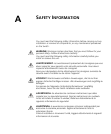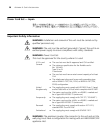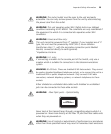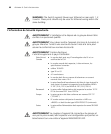
Solving Hardware Problems 53
■ The quality of cable is satisfactory.
■ Auto-negotiation settings are the same at both ends.
Auto-negotiation problems will occur with 10BASE-T, 100BASE-TX or
1000BASE-T where auto-negotiation is disabled and incorrect cables
are being used (cross-over or straight).
Auto-negotiation problems will occur with fiber if:
■ Fibers are broken.
■ Auto-negotiation differs at either end (a link appears at the ‘fixed’
end and not at the auto-negotiation end).
A PoE device is connected and yet the PoE Status LED does not
light
Refer to “A device is connected to the Switch but power is not being
supplied” on page 53 for troubleshooting procedures.
Solving Hardware
Problems
In the rare event of your Switch unit experiencing a hardware failure,
refer to the list of suggested solutions below.
A device is connected to the Switch but power is not being
supplied
If power is not being supplied to a device connected to the Switch, you
should do the following checks:
■ Check that the device is compliant with the 802.3af standard ref. [18].
The Switch will only supply power through rear panel ports 1, 2, 5,
and 6 to 802.3af compliant devices.
■ Check that the power budget for the Switch has not been exceeded.
If the power budget has been exceeded, then by default, the powered
device connected to the Power over Ethernet port with the lowest
priority port will lose power. However, if all the devices connected to
the Switch have equal priority levels, then the port with the highest
number will lose power.
By default the Switch will allow a device to receive power as long as
the Power over Ethernet power supply has 18 watts spare in its power
budget. If this much power is not available the device will not be
powered (unless it has a higher priority than existing powered ports)
and a Power over Ethernet fault will be reported for that port. If



